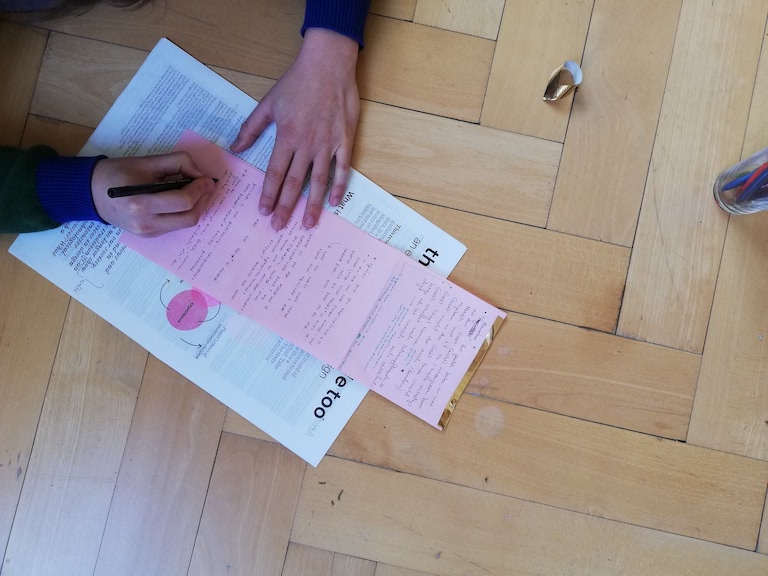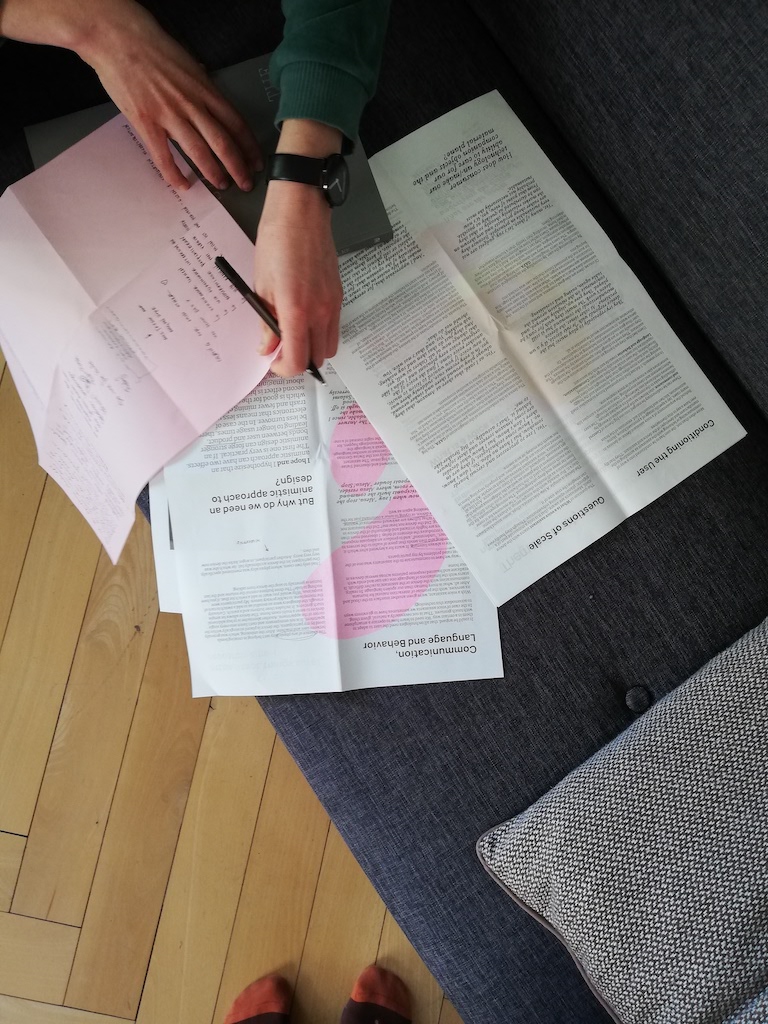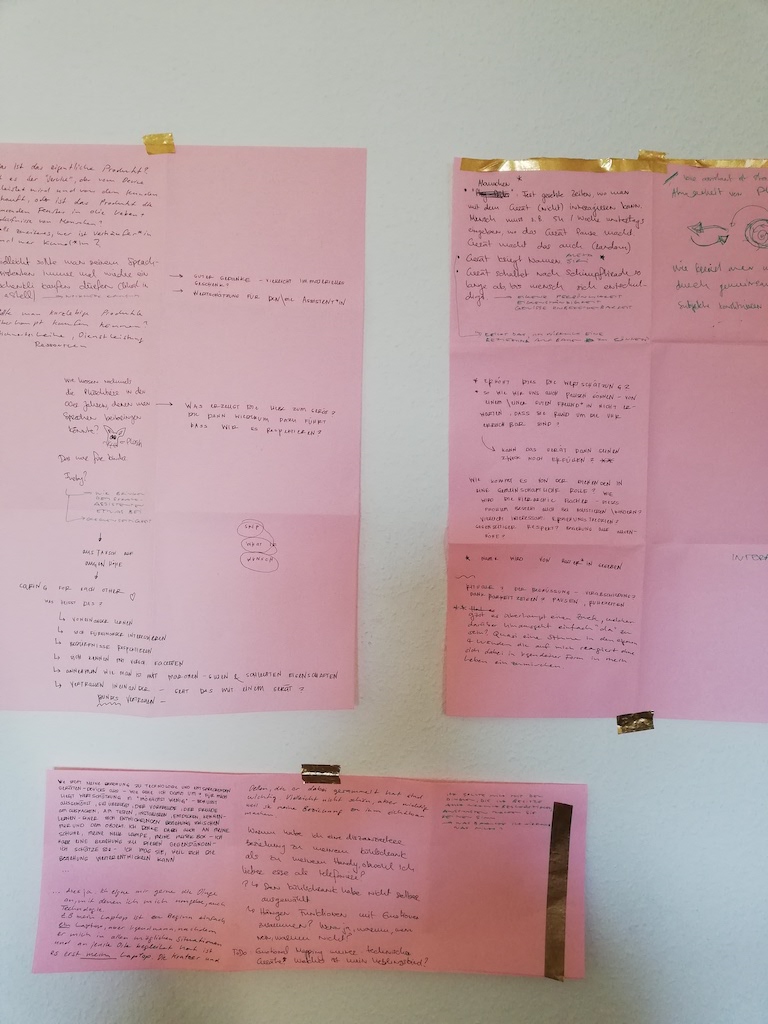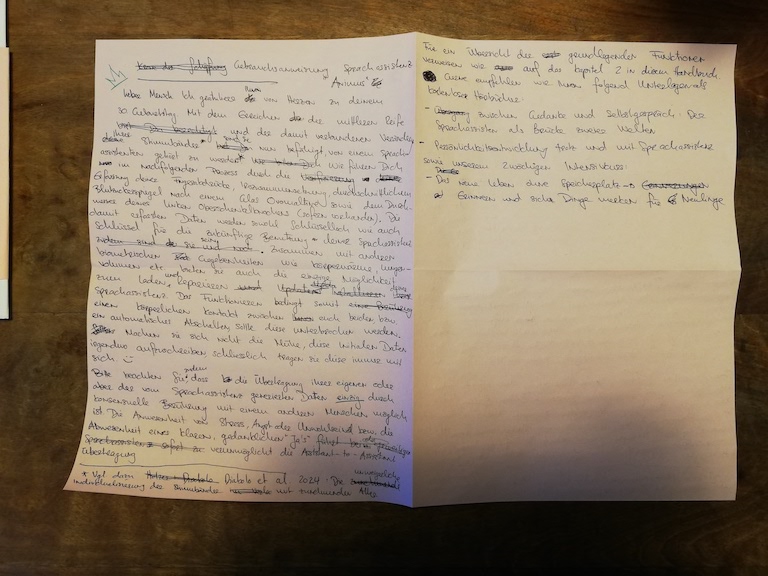Evaluation of Expert Workshop
Feb 18, 2021
Notes on workshop format
The pace of the workshop was welcomed by the participants. In contrast to classical design thinking workshops, this format here was much slower and introspective. I had two currents going on. On was to bring the participants, who didn’t know each other, together. The other current was to open up the imagination from a common starting point.
The workshop culminated in a shared storytelling session. Not as planned, the participants prefered to work alone on their stories. The participants also wished to know more about or work more with the subject of animism, which was a bit lesser represented in this workshop.
The main goal of the workshop, to have a workable idea for a prototype, was missed. That said, the stories are rich in references, that in combination with the emotionally durable design framework can give rise to a prototype. I think I will work something out and make a proposition of a prototype to the participants that they can give a feedback on then.
Examination, thoughts and key points on the stories
I also include fragments of what was said during the more informal talks in this reflection.
Form (as in design) was not an issue, thought or talked about. That was surprising to me. Form was mentioned in the way of it’s function, for example it’s implementation and function in the environment (doors) or as jewelery. That said, physicality or bodily closeness mattered a lot to the participants. Touch and wearing or even VAs thought of as prosthesis (as in enabling something one can’t do on their own) was often mentioned.
A big topic was the proper recognition of a VA, a honest other-than-humaning. The participants had the feeling that the fake human persona leads only to problems; master slave patterns, frustration through weird communication, unnecessary emotional investements. The VAs need to be positioned and act as a other-than-human that they actually are. The participants didn’t want to have to love the device, or being overly dependent on it.
This motion of de-anthropomorphising the VAs was paralelled by the desire to meet them at eye level (auf Augenhöhe begegnen). That mainly meant that there is a mutuality or reciprocity in gestures. For example to have to care for the device in order for it to provide its services.
Another big issue was trust, in the device but mainly in the companies behind the device. It’s permanent presence is not necessarily wished for (as in being in control of your safety/comfort zones) which is very important in the context of a home. In the futuring process, ideas were talked about, how a world with ubiqutous VAs would look and feel like. In that context, laws and regulations but also societal behaviour are important parts to think about.
Not having any input on the form (aesthetics) of an animist approach to VAs leaves me with a big gap here. The question arises if this aspect is left to cultural interpretation or if the participants were not enabled to imagine in this direction.
Stories
- Expert Workshop - Story 1
- Expert Workshop - Story 2
- Expert Workshop - Story 3
- Expert Workshop - Story 4
Photos of workshop







